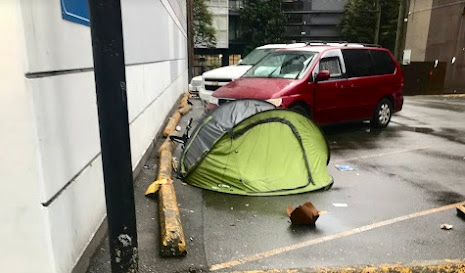 |
| New York, Greenwich Village Park at night. When it comes to preventing (and understanding) crime - neighborhoods have always mattered. |
by Gregory Saville
I was thinking about my recent blog Do we know enough about crime to prevent it? Then I remembered some writing from Stanley Leiberson, former president of the American Sociological Association and member of the National Academy of Sciences. He wrote the book Making it Count: the Improvement of Social Theory, about the logic and reasoning in social science. That was a publication I wrote about during my doctoral research and I was mystified my supervisors knew nothing of it nor seemed interested in it.
Decades before the evidence-based/crime science movement was around, Lieberson showed how social science went wrong by searching for a way to mimic classical, physics-style research.
The doctrine of the undoable
He coined the term the doctrine of the undoable. In his book, he asked: “are there questions currently studied that are basically unanswerable even if the investigator had ideal nonexperimental data?” He discussed non-experimental, and yet rigorous, ways to answer difficult questions while still remaining scientific.
Lieberson claimed social research sought to mathematize every factor, replicate findings in a lab, and deploy randomized controls (the same points I made last blog). While some of those have a place, Lieberson thought a more fruitful approach was the holistic methods emerging during breakthrough scientific discoveries, especially those used by evolutionary biologists. Biologists use rigorous observations and then construct logical systems (hence, my point on typologies).
 |
| Scientists like evolutionary biologists and ecologists use holistic methods of research to study the natural environment through history |
Collective Efficacy and Chicago’s neighborhoods
Lieberson was on to something fundamental, a discovery made real in Sampson's, Great American City: Chicago and the Enduring Neighborhood Effect. Robert Sampson is the recipient of the Stockholm Prize in Criminology, (the “Nobel” award of that field), and something of a phenom when it comes to sociological work on cities.
If you care about neighborhood safety and health, read this book! It virtually re-invigorated the famous Chicago School of Urban Ecology from the last century, an approach that led to most modern sociological theories about the city. Among them, collective efficacy and social cohesion are integral principles within the SafeGrowth planning method.
 |
| Between all the towers, smaller places thrive. All cities are congregations of one type of neighborhood or another |
Sampson’s work followed many of the principles that Lieberson espouses. Sampson's findings seem to use a Lieberson-style methodology to revive the idea of neighborhoods as a powerful way to create safer and more livable cities. We have seen this repeatedly in SafeGrowth neighborhoods.
Contextual causality – a new scientific concept
In one powerful chapter titled “Neighborhood Effects and a Theory of Context”, Sampson concludes, “We require a more flexible conception of causality than that offered by individual experiments and their mathematical counterparts”.
Then he adds a concept that aims straight back to the social ecologists of the 1940s and their focus on the interactions between neighborhood residents and how that can create a crime-resistant neighborhood.
“Consistent with a pragmatist philosophy of science and the idea that causality can only be understood in a context, I believe this book taken as a whole has demonstrated a family of neighborhood effects and examples of contextual causality.” (page 383 in Great American City).
Sampson’s work, particularly regarding neighborhood effects, is a watershed in the theory of crime prevention. It puts to rest many of the old criticisms that questioned the power of neighborhood organizing to prevent crime. Even notable scholarly works like Wesley Skogan’s Disorder and Crime: The Spiral Decay of American Neighborhoods, take a derisive turn on community organizations when it comes to preventing crime.
Skogan offers two case studies on community organizations tackling disorder and crime, neither of which were successful (page 155, Disorder and Crime). Then again, both cases used “neighborhood block-watch groups” as the strategy and surveys as the method of evaluation – which takes us right back to the problem of research methods and context.
 |
| Neighborhood Watch groups and traditional neighborhood associations are not always well suited to create plans to prevent crime |
To be clear, Skogan’s work includes some penetrating insights into the dynamics of disorder, particularly the struggles by community policing to address it. Putting aside the reliance on public awareness as a measure of effectiveness and the curious dependence on statistical "path coefficients" (a popular statistical fashion of the day), it is a pretty good read.
But, two decades later, looking back through the prism of Sampson’s neighborhood effects and social cohesion/ efficacy theories, it is clear that a new dawn has emerged in neighborhood research. Context causality methods, first suggested by Lieberson, now offer a more powerful context-based research program for neighborhood crime prevention (and, possibly, a more pragmatic social science).
 |
| Sociologist Stanley Lieberson - a giant in sociological thought Photo Harvard Emeritus Faculty |
Lieberson died in 2018. It would be fascinating to travel back a few years and report to him just how ground-breaking he was in triggering this new movement in neighborhood-based research and crime prevention. I wonder if he had any idea?












